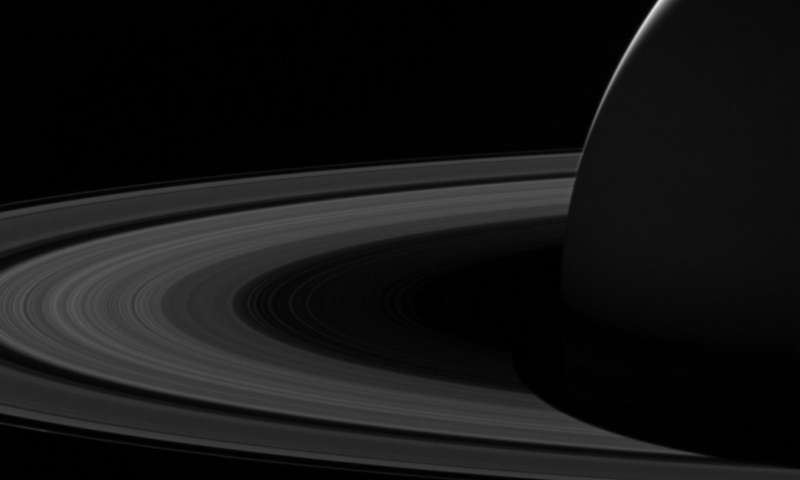
Last month, the formidable Cassini spacecraft ended its 20-year-mission with a nose dive into Saturn’s atmosphere. NASA’s Cassini-Huygens mission launched in 1997 and took seven years to reach its destination around Saturn and its 53 moons. Over the course of its long mission, Cassini’s achievements were legion. Besides landing a freaking probe on Titan, a methane-filled world similar to the early days of Earth before life evolved, Cassini made the most planetary flybys any man-made craft ever has — over 100. Before arriving in Saturn’s orbit, Cassini circled Earth, Venus, and Jupiter.
It was over the course of these flybys that Cassini took some of the most breath-taking pictures of Saturn. Now, NASA has another one worthy of Cassini’s ‘best of’ collection — a unique view of Saturn’s dark side.
Because Earth orbits much closer to the sun than Saturn, ground-based telescopes were never able to observe the gas giant’s dark side. As such, this image would have never been possible were it not for the Cassini spacecraft.
The picture was taken on 7 June 2017, with the spacecraft’s onboard wide-angle camera. At the time, Cassini was about 1.21 million kilometers from Saturn, facing the sun-lit side of the rings seven degrees above the plane of rings.
Though the spacecraft itself is toast, the mission will live on for many years. During its 20-year trip, Cassini has beamed back a trove of data and images which will keep scientists busy for a long time. Perhaps, the mission’s most important contributions to science are still a work in progress.



